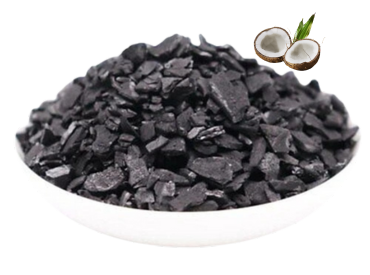Coconut Shell Activated Carbon: Explore Our Range of Mesh Sizes & Adsorption Capacities

AP Air-Liquid Industrial Equipment Trading, a leading coconut shell carbon supplier in the Philippines, is dedicated to providing customers with premium products. Our Coconut Shell Activated Carbon is a highly sought-after, sustainable, and efficient material, offering both economic and environmental advantages. Produced from vapor-activated coconut husk, its micro-pore structure ensures effective impurity absorption with minimal carbon footprint.
Coconut Shell Activate Carbon: Materials Used
Coconut shell activated carbon is derived, as the name suggests, from coconut shells, a readily available and renewable agricultural byproduct. The journey from a discarded coconut shell to a highly effective adsorbent involves a carefully controlled multi-stage process.
Coconut Shell Activated Carbon Production Process
The first crucial step is carbonization, also known as pyrolysis. Cleaned and dried coconut shells are heated in an oxygen-deficient environment at high temperatures, typically ranging from 600 to 900°C (1112 to 1652°F). This thermal decomposition process drives off volatile organic compounds, moisture, and other impurities present in the shells. What remains is a carbon-rich material known as char, which retains the basic cellular structure of the coconut shell but with increased porosity.
However, this char has a limited surface area and adsorption capacity. To transform it into highly porous activated carbon, it undergoes a second stage called activation. This process significantly expands the internal pore network and dramatically increases the surface area available for adsorption. Activation can be achieved through two primary methods:
- Physical Activation (Thermal Activation): The char is exposed to oxidizing gases, most commonly steam, carbon dioxide, or a mixture of both, at even higher temperatures, typically between 800 and 1100°C (1472 to 2012°F). These gases selectively react with the carbon structure, creating new pores and widening existing ones, thus dramatically increasing the surface area and pore volume. The conditions (temperature, gas flow rate, and duration) are carefully controlled to achieve the desired pore size distribution for specific applications.
- Chemical Activation: The raw coconut shells or the char are impregnated with a chemical activating agent, such as phosphoric acid (H3PO4), potassium hydroxide (KOH), or zinc chloride (ZnCl2). The mixture is then heated to lower temperatures, typically between 400 and 700°C (752 to 1292°F). The chemical agent aids in the development of the porous structure. After activation, the chemical agent is washed out, leaving behind the activated carbon.
Coconut shell is a particularly desirable raw material for activated carbon production due to its inherent hardness and the resulting microporous structure of the activated carbon. This microporosity makes it exceptionally effective at adsorbing small organic molecules, chlorine, chloramines, and other common water contaminants. Furthermore, coconut shells are a renewable resource, making coconut shell activated carbon a more environmentally sustainable option compared to activated carbon derived from fossil fuels like coal. The resulting activated carbon often exhibits high purity, low ash content, and excellent mechanical strength, making it well-suited for various purification applications, especially in water treatment.
Dependability You Can Build On: AP Air-Liquid Industrial Equipment Trading delivers consistent, high-quality industrial supplies, forming a solid foundation for your operational success and long-term growth.
